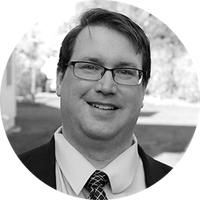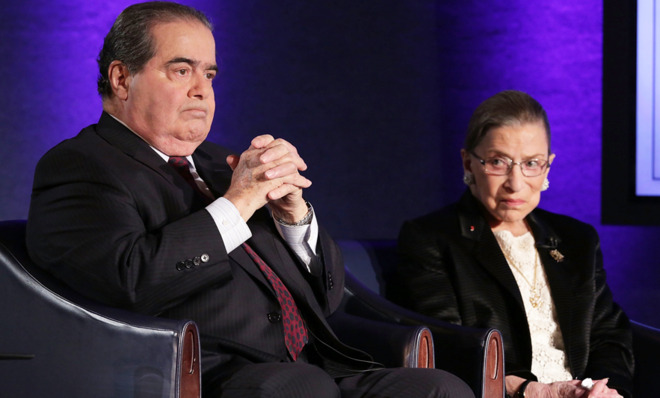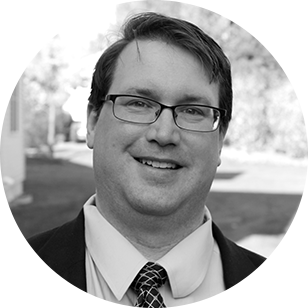Can the Supreme Court be rescued from politics?
The court in recent years has only grown more polarized and ideological. And the trend lines don't look good.


During his Supreme Court confirmation hearings in 2005, John Roberts famously claimed that a justice's job is "to call balls and strikes and not to pitch or bat." Similarly, in 2009, Sonia Sotomayor pledged her "fidelity to the law," perpetuating the notion that the law is some objective standard that can be applied uniformly to cases that come before the nation's highest court.
But recent evidence shows that the notion of an apolitical Supreme Court has only become more antiquated.
Adam Liptak, the invaluable Supreme Court reporter for the The New York Times, recently wrote about a study conducted by the legal scholars Lee Epstein, Christopher Parker, and Jeffrey Segal. The study showed that Supreme Court justices betrayed "in-group" bias in their First Amendment jurisprudence — that is, they were more likely to uphold the First Amendment claims of defendants whose speech they liked.
The Week
Escape your echo chamber. Get the facts behind the news, plus analysis from multiple perspectives.

Sign up for The Week's Free Newsletters
From our morning news briefing to a weekly Good News Newsletter, get the best of The Week delivered directly to your inbox.
From our morning news briefing to a weekly Good News Newsletter, get the best of The Week delivered directly to your inbox.
The findings of the study are consistent with what Segal and Harold Spaeth have called the "attitudinal model" of judging. This model holds that Supreme Court votes are explained by what judges consider desirable policy. Samuel Alito votes the way he does because of his conservative politics, and likewise Ruth Bader Ginsburg votes the way she does to achieve liberal ends. Contrary to the balls-and-strikes analogy, every case by definition is one in which reasonable people can disagree about what the law requires, which means we're particularly likely to see voting based primarily on political preferences.
To be sure, like all social science models, the attitudinal model is an oversimplification. Supreme Court voting is too complex to be explained by any single factor. As Epstein's own research has proven, Supreme Court justices do not just vote their sincere preferences, but also for strategic reasons — both to assemble majority coalitions on the court and because Supreme Court decisions generally need compliance by other political actors to be carried out. There are also cases, believe it or not, when a justice's notion of good law trumps his or her political preferences.
The court's decision narrowly upholding the Affordable Care Act — but striking down the ACA's mechanism for funding Medicaid — is a case in point. A majority of the justices applied conceptions of national power that, for better or worse, they've applied in cases that considered both conservative and liberal policies. These judicial preferences are not "apolitical" — there are reasons why liberals tend to favor expansive federal power and conservatives are less likely to — but they're not identical to the votes of legislators.
Antonin Scalia and Anthony Kennedy, on the other hand, appeared to vote opportunistically, holding that the ACA was unconstitutional despite having upheld expansive assertions of federal power by the administration of George W. Bush. The votes of Stephen Breyer and Elena Kagan to strike down the Medicaid funding mechanism were most likely strategic. And, finally, it's hard to explain Roberts' idiosyncratic vote to hold the ACA unconstitutional under the commerce power, but constitutional under the tax power, unless it was his genuine view about what the law required.
A free daily email with the biggest news stories of the day – and the best features from TheWeek.com
Supreme Court voting, in other words, is influenced by a complex mix of variables, and what is "law" and what is "politics" cannot be defined with mathematical precision.
If the attitudinal model is an oversimplification, however, it still contains a great deal of truth. The fact that First Amendment jurisprudence is significantly colored by the identity of the speaker and the content of the speech is a case in point.
The frequently political nature of Supreme Court votes is particularly important because of another phenomenon recently discussed by Liptak: partisan polarization. Just as for much of the 20th century American political parties were loose aggregations, Supreme Court justices did not have ideological views that fell neatly along party lines. Both Woodrow Wilson and FDR appointed staunch liberals and racist Southern segregationists to the Supreme Court. Several of the most liberal judges of the second half of the 20th century — William Brennan, Earl Warren, and John Paul Stevens — were Republican nominees, while JFK nominee Byron White dissented in Miranda v. Arizona (which established Miranda rights) and Roe v. Wade (which upheld the right to an abortion).
Now, Democratic and Republican appointments are very ideologically predictable. The four most liberal justices on the court are Democratic nominees, and the five most conservative justices are Republican nominees. Moreover, it is nearly certain that any nominee selected by a Republican president would be more consistently conservative than the court's current swing vote, Kennedy.
The result going forward is likely to be what the political scientist Mark Graber calls a "constitutional yo-yo," in which the Supreme Court lurches between periods of consistently conservative and liberal outcomes rather than producing decisions that tend to fall within the center of public opinion (as has been the historical norm).
There is, however, an important proviso. Partisan polarization in American politics has not been symmetrical — the Republican Party has moved much more to the right than the Democratic Party has to the left. This asymmetrical polarization is also visible on the Supreme Court. The First Amendment study shows liberal justices having a modest tendency to favor liberal speakers, while conservative justices have a huge tendency to favor conservative ones. (Scalia, Clarence Thomas, and Roberts are more than 40 percent more likely to favor conservative speakers, while for Ginsburg and Stevens the figure is under 20 percent, and with Breyer the favoritism shown to liberal speakers is tiny.)
This asymmetrical polarization is not visible just in First Amendment cases, either. The court's four most conservative members are among the four most conservative justices to have served on the Supreme Court since World War II, with the court's most liberal current member (Ginsburg) well to the right of Warren Court-era liberals like William Brennan and Thurgood Marshall.
All of this means that future Supreme Court choices have the potential to have a huge impact on the country. It's not clear, however, that both parties have an equal understanding of this: While the Bush administration saw the confirmation of unapologetically conservative justices like Roberts and Alito, the Obama administration has worked to nominate those — Sotomayor and Kagan — who are considered fairly moderate on the liberal spectrum.
Scott Lemieux is a professor of political science at the College of Saint Rose in Albany, N.Y., with a focus on the Supreme Court and constitutional law. He is a frequent contributor to the American Prospect and blogs for Lawyers, Guns and Money.
-
 Why it’s important to shop around for a mortgage and what to look for
Why it’s important to shop around for a mortgage and what to look forThe Explainer You can save big by comparing different mortgage offers
-
 4 ways to save on rising health care costs
4 ways to save on rising health care costsThe Explainer Health care expenses are part of an overall increase in the cost of living for Americans
-
 How to financially prepare for divorce
How to financially prepare for divorceThe Explainer Facing ‘irreconcilable differences’ does not have to be financially devastating
-
 Bari Weiss’ ‘60 Minutes’ scandal is about more than one report
Bari Weiss’ ‘60 Minutes’ scandal is about more than one reportIN THE SPOTLIGHT By blocking an approved segment on a controversial prison holding US deportees in El Salvador, the editor-in-chief of CBS News has become the main story
-
 Has Zohran Mamdani shown the Democrats how to win again?
Has Zohran Mamdani shown the Democrats how to win again?Today’s Big Question New York City mayoral election touted as victory for left-wing populists but moderate centrist wins elsewhere present more complex path for Democratic Party
-
 Millions turn out for anti-Trump ‘No Kings’ rallies
Millions turn out for anti-Trump ‘No Kings’ ralliesSpeed Read An estimated 7 million people participated, 2 million more than at the first ‘No Kings’ protest in June
-
 Ghislaine Maxwell: angling for a Trump pardon
Ghislaine Maxwell: angling for a Trump pardonTalking Point Convicted sex trafficker's testimony could shed new light on president's links to Jeffrey Epstein
-
 The last words and final moments of 40 presidents
The last words and final moments of 40 presidentsThe Explainer Some are eloquent quotes worthy of the holders of the highest office in the nation, and others... aren't
-
 The JFK files: the truth at last?
The JFK files: the truth at last?In The Spotlight More than 64,000 previously classified documents relating the 1963 assassination of John F. Kennedy have been released by the Trump administration
-
 'Seriously, not literally': how should the world take Donald Trump?
'Seriously, not literally': how should the world take Donald Trump?Today's big question White House rhetoric and reality look likely to become increasingly blurred
-
 Will Trump's 'madman' strategy pay off?
Will Trump's 'madman' strategy pay off?Today's Big Question Incoming US president likes to seem unpredictable but, this time round, world leaders could be wise to his playbook
